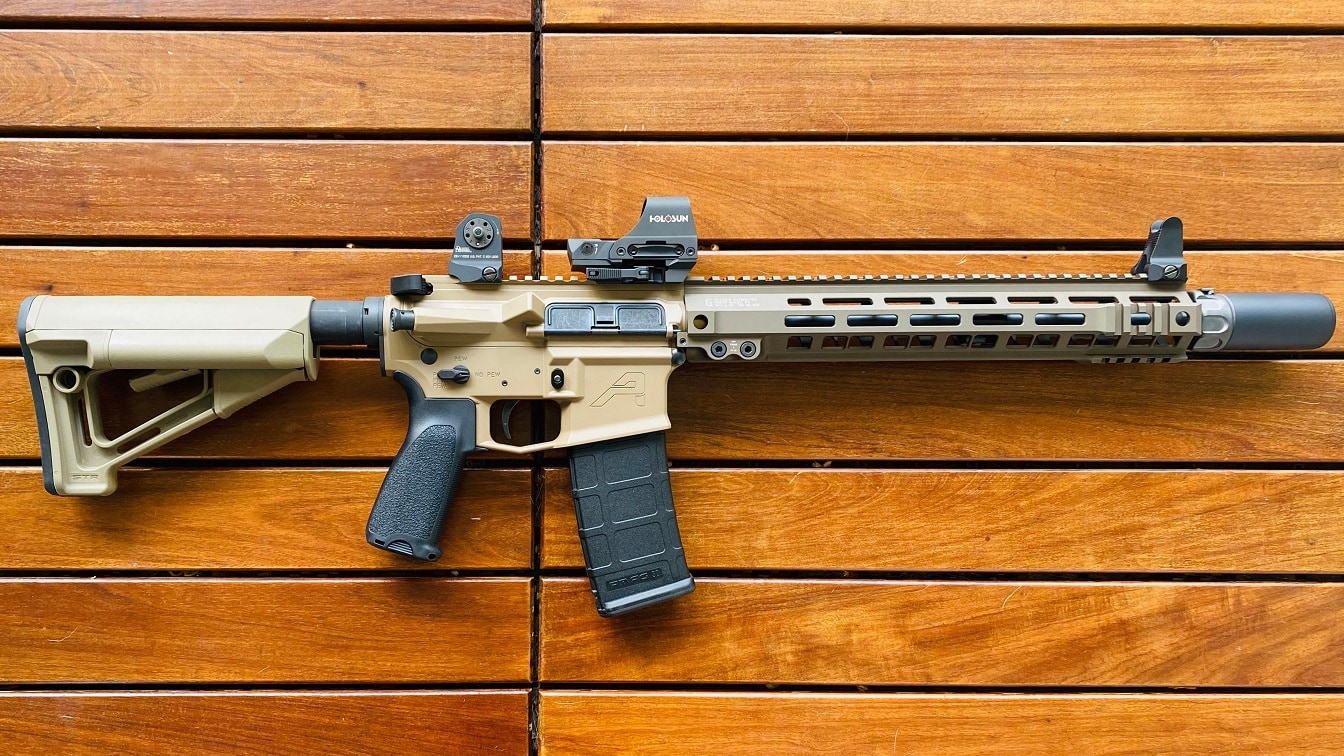The AR-15 Isn’t a Weapon of War – President Joe Biden often parrots a sentiment repeatedly offered by many gun control advocates in the United States today, namely that AR-15 style firearms have no place in the hands of civilians as these are “weapons of war” by their account. It makes for a compelling argument.
But there are some facts that quickly counter the argument.
The United States Department of Defense (DoD) had a budget of $766 billion last year – the largest defense budget in the world accounting for 39 percent of the entire worldwide military spending – and yet, it didn’t buy likely buy a single AR-15.
If the AR-15 was, in fact, a weapon of war, it would be employed by our warfighters today, but it isn’t.
Nor has it ever been.
That is because the AR-15 is a civilian version of what is used by the U.S. military – and it isn’t just the designation that is different.
Those who claim the AR platform is a weapon of war aren’t likely to point out that the United States Air Force operates a number of Boeing 707 jetliners that have been modified as the E-3 Sentry, an early warning and control system (AWACS). It is doubtful anyone would want to take the E-3 on a business trip or a vacation flight as the aircraft has been specially modified to fill a very specific need for the U.S. military.
In fact, the differences between the E-3 and the 707 are essentially similar to those of the AR-15 and the military M16 platform. The former is a semi-automatic firearm that can only fire one shot each time the trigger is pulled. By contrast, the M16 is select-fire and has a burst mode, as well as semi-automatic. Given a choice, it is unlikely that any soldier heading to a battlefield would opt for the AR-15 over the M16.
The AR-15 may resemble the M16, much as the E-3 Sentry is based on the commercial 707. What they do, how they operate, and even where they’re employed are still quite different.
AR-15 and More: What Defines a Weapon of War?
The case has also been made repeatedly that the term “weapon of war” is just political hyperbole.
At some point in human history, a rock was the most advanced weapon of the day. That evolved into clubs, axes, swords, and eventually firearms.
Throughout much of the nation’s history, there was no difference between weapons of war and what a civilian could carry. They were often one and the same, and in many cases, the civilian versions were superior to the military version. That was certainly the case when the Second Amendment was drafted.
Civilians could carry weapons as advanced as anything the military had in its arsenals. It was only really with the adoption of iron-clad warships in the American Civil War that the scales were tipped in favor of the government. But even then, civilians could – despite what President Biden has often claimed – own cannons. Though these weren’t typically marketed to civilians, such weapons were used on commercial vessels due to concerns over piracy.
Throughout the 18th and 19th centuries, firearms made for civilians were even of higher quality than what soldiers may have carried.
Private Purchase Weapons The Army Didn’t Have
Into the early 20th century, machine guns were also marketed to civilians – although they were considered prohibitively expensive. Case in point, the parents of William Tiffany, who was a friend of then Lt. Colonel Teddy Roosevelt and fellow “Rough Rider,” bought their son’s unit a Colt Browning M1895 machine gun. That unit, the First United States Volunteer Cavalry, was preparing to head to Cuba to fight in the Spanish-American War and the Tiffany family along with the Stevens and Kane families – parents of Corporal Joseph S. Stevens and Captain Woodbury Kane respectively – worried their sons’ unit lacked the necessary firepower for the conflict.
As the NRA’s American Rifleman reported, the U.S. Army hadn’t actually adopted the Colt Browning machine gun at that point and was still relying on the manually operated Gatling Gun. Thus the first machine guns used by the Army were those privately purchased by the soldiers’ families – a point that truly drives home this notion of “weapon of war.”
One hundred and twenty-five years ago the U.S. Army didn’t issue its soldiers machine guns, yet the private citizen was able to buy them.
Today, the U.S. military spends nearly $800 billion on everything from aircraft carriers to fighter jets to small arms that no civilian can own.
At least Joe Biden gets that point sort of right, as he recently told high-ticket donors at a fundraiser, “I love these guys who say the Second Amendment is — you know, the tree of liberty is water with the blood of patriots. Well, if [you] want to do that, you want to work against the government, you need an F-16. You need something else than just an AR-15.”
But let’s consider the final point then. His stance that the AR-15 isn’t the tool to water the tree of liberty actually serves to defeat his argument that it is a weapon of war, at least compared to what the American warfighters today have in their arsenal.
Author Experience and Expertise
A Senior Editor for 19FortyFive, Peter Suciu is a Michigan-based writer. He has contributed to more than four dozen magazines, newspapers, and websites with over 3,200 published pieces over a twenty-year career in journalism. He regularly writes about military hardware, firearms history, cybersecurity, politics, and international affairs. Peter is also a Contributing Writer for Forbes and Clearance Jobs. You can follow him on Twitter: @PeterSuciu.
From 19FortyFive
Donald Trump Is Starting to Scare Everyone

